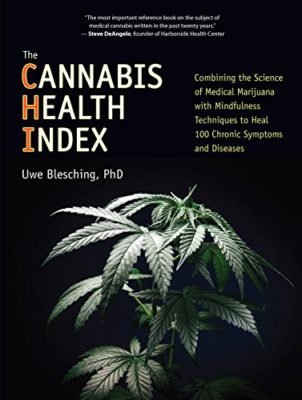High Tech Marijuana Growing
Information Technology is sparking
the budding cannabis industry.

By Jason Perlow
As a Florida resident, I have been watching with great interest the legalization of medical cannabis in our state and how an entirely new and growing ecosystem of businesses is evolving seemingly overnight since our governor, Rick Scott, enacted the highly controversial and contested Amendment 2 into law back in June.
The US legal marijuana industry, including medical and recreational (for states that have it, such as California and Washington), is expected to be valuated at $20 billion by 2020.
This does not include all sorts of businesses that are indirectly related to the sale of medical cannabis products themselves, such as secondary products involved in the manufacture of food and nutraceuticals, plastics, biofuels and fibers that can be made from the hemp plant. Also not included: Essential consumables manufacturing for the medical marijuana companies such as packaging.
Like any developing vertical market, the marijuana industry will have very specific needs in terms of enabling software, line of business applications, and IT services.
If that $20 billion marijuana sales prediction is even half accurate that means there are still hundreds of millions or even billions of dollars to be made in services supporting medical and recreational marijuana companies.
I have not closely examined the medical cannabis industry outside my own state, as each has decided to pursue its own path towards legalization. Florida is unique in that we have chosen a vertically integrated market and we have enacted very tight controls on how medical marijuana may be sold and consumed. What does that mean, exactly?
California, which is perhaps the most permissive state in terms of its marijuana legislation, divides its industry into six discrete activities, which are Cultivation, Manufacturing, Testing, Dispensary, Distribution, and Transportation.
In California, it is possible for a business to be licensed to do all or any part of the above, except for testing, which is considered a separate category from the others, with the intention that testing businesses (those that test marijuana products for genetic lineage and chemical purity/makeup) remain disinterested parties.
California is said to be a horizontal industry in that dispensaries (licensed stores) which sell medical and recreational products can source from a distributor, who buys from a manufacturer that creates medications and products, and in turn buys from cultivators.
Click here to read the rest of the article.
Below are 3 books that belong in every library.

Stoned- A Doctors Case FOR Medical Marijuana – by David Casarett, MD
No substance on earth is as hotly debated as marijuana. Opponents claim it’s dangerous, addictive, carcinogenic, and a gateway to serious drug abuse. Fans claim it as a wonder drug, treating cancer, anorexia, AIDS, chronic pain, glaucoma, arthritis, migraines, PTSD, and insomnia. Patients suffering from these conditions need—and deserve—hard facts based on medical evidence, not hysteria and superstition.
In Stoned, palliative care physician Dr. David Casarett sets out to do anything—including experimenting on himself—to find evidence of marijuana’s medical potential. He smears mysterious marijuana paste on his legs and samples pot wine. He poses as a patient at a seedy California clinic and takes lessons from an artisanal hash maker. In conversations with researchers, doctors, and patients around the world he learns how marijuana works—and doesn’t—in the real world.
Dr. Casarett unearths tales of near-miraculous success, such as a child with chronic seizures who finally found relief in cannabidiol oil. In Tel Aviv, he learns of a nursing home that’s found success giving marijuana to dementia patients. On the other hand, one patient who believed marijuana cured her lung cancer has clearly been misled. As Casarett sifts the myth and misinformation from the scientific evidence, he explains, among other things:
• Why marijuana might be the best treatment option for some types of pain
• Why there’s no significant risk of lung damage from smoking pot
• Why most marijuana-infused beer or wine won’t get you high
Often humorous, occasionally heartbreaking, and full of counter-intuitive conclusions, Stoned offers a compassionate and much-needed medical practitioner’s perspective on the potential of this misunderstood plant.

Cannabis Health Index – by Uwe Blesching
This comprehensive source book combines evidence-based insights from more than 1,000 studies from cannabinoid and consciousness research to present a convincing case for the powerful healing effects of medical marijuana on over 100 chronic symptoms and diseases. Written by a former paramedic with a PhD in alternative healthcare, this in-depth reference shows that the subtle shifts in awareness commonly observed in cannabis-using patients vastly contribute to these compounds’ therapeutic potential.
The Cannabis Health Index is organized into condition-specific chapters, with eye-catching ratings of cannabis efficacy for each symptom, along with recommendations for use, and sidebars that suggest related mindfulness-based practices that enhance the body’s own ability to heal. Organized alphabetically from aging to wound care, with sections on a variety of conditions including infections, cancer, cardiovascular health, eye diseases, inflammatory diseases, neurological diseases, and much more, the Index reveals that the huge body of scientific studies focused on cannabis is a tremendously under-utilized repository of knowledge.
In synthesizing the findings of these studies, Blesching brings clarity to the process of making informed decisions about cannabis as a valid treatment. Informative, user-friendly, and practical, The Cannabis Health Index presents striking evidence that cannabis is remarkable safe and effective when used within the proper therapeutic window, especially compared with the risks of managing chronic symptoms with pharmaceuticals.

COPS Across Borders – by Ethan Nadelmann
Cops Across Borders is the first book to examine the policies and issues that lie at the intersection of U.S. foreign policy and U.S. criminal justice. Drawing on interviews with nearly 300 U.S. and foreign law enforcement officials in nineteen countries as well as extensive historical and contemporary materials, Ethan Nadelmann examines how and why U.S. law enforcement officials have extended their efforts beyond American borders, how they have dealt with the challenges confronting them, and why their efforts have proved more or less successful.
Nadelmann’s analysis traces the evolution of U.S. law enforcement activities abroad since the nation’s founding. During the nineteenth century, U.S. customs agents collected information on smuggling operations, naval officers tracked illegal slave trading vessels, slave owners tried to recover fugitive slaves who had fled to Canada and Mexico, Pinkerton detectives pursued fugitives and investigations around the world, and federal, state, and local authorities chased cattle rustlers, Indians, bandits, and revolutionaries across the border with Mexico. Today, U.S. federal law enforcement agents target an even greater array of crimes and criminals. The U.S. Drug Enforcement Administration (DEA), with agents stationed in about 70 foreign cities, is the principal nemesis of transnational drug traffickers. FBI agents abroad investigate terrorist attacks on U.S. citizens and interests as well as white-collar and organized crime. Customs agents focus on money laundering, high-tech smuggling, and a wide variety of frauds against the customs laws. Secret Service agents target counterfeiting. And attorneys in the Departments of State and Justice supervise the rendition of fugitives and the collection of evidence in criminal investigations.
Cops Across Borders examines how U.S. law enforcement officials have responded to the challenges of internationalization: how DEA agents have adapted to the constraints of operating in civil-law countries that prohibit many U.S.-style investigative techniques, how DEA agents have worked with and around the widespread police corruption in Latin America, and how Justice Department officials have improved their capacity to secure evidence and fugitives from foreign countries that operate according to very different legal and social norms. Like other studies of comparative law, policing, and criminal justice, this book compares the approaches and behavior of law enforcement officials in different countries; but it also goes a step beyond those studies in its analysis of how criminal justice systems interact with and are influenced by those of other states. Nadelmann argues that the internationalization of U.S. criminal law enforcement has contributed to the “Americanization” of criminal justice systems around the world.
Cops Across Borders demonstrates conclusively that the interpenetration of U.S. foreign policy and criminal justice institutions and concerns has become too substantial to be ignored by scholars any longer. It thereby breaks new ground in the study of both international relations and criminal justice. The even broader contribution of Cops Across Borders lies in its analysis of how systems devised for dealing with domestic crime respond to the demands of internationalization.
sounds like lots of market segmentation that helps price gauge consumers.
hello friend,
get more followers and upvotes for free
i have got 870 followers
https://steemfollower.com/?r=2865
Thank you!! But when I went to that URL it seemed to be promoting a bot of some sort that would give me steemit likes....that don't seem like a good thing to do. I'm only interested in real people reading and liking my posts. That's what makes having a blog FUN!!